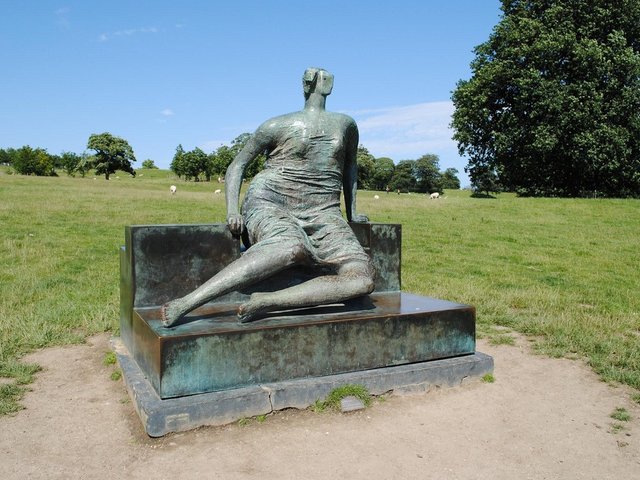The Henry Moore Foundation has been given an overhaul for its 40th anniversary, with a new visitor and archive centre due to launch on 14 April. The £7m redevelopment of the Henry Moore Studio & Gardens in Perry Green, Hertfordshire, has been overseen by the London-based Hugh Broughton Architects.
The Henry Moore archive, which includes more than 750,000 items, is now under one roof, located in a purpose-built development at Elmwood House, formerly a residential property. The new venue includes six climate-controlled rooms, and a project space for the digitisation and conservation of materials. “Despite careful preservation of landscape and buildings at Moore’s home at Perry Green, the foundation’s activities had outgrown their facilities which were in need of an overhaul,” says Broughton in a statement.
An exhibition, Becoming Henry Moore (14 April-22 October), at the Hertfordshire venue marks the opening of the new facilities. The show charts the sculptor’s artistic development from 1914 to 1930, and includes Moore’s first commission, a First World War roll of honour for his secondary school in Castleford, west Yorkshire. The exhibition, which also includes works by Pablo Picasso and Jacob Epstein, will tour to the Henry Moore Institute in Leeds (30 November-18 February 2018).
Since the foundation was established in 1977, it has awarded grants to more than 2,000 artists totalling more than £31m, says the director, Godfrey Worsdale. The foundation awarded £15,000 to the presentation of Karla Black’s works at the Venice Biennale in 2011, and is also supporting sculptor Phyllida Barlow’s exhibition in the British pavilion this summer (13 May-26 November).
Meanwhile, Moore’s Draped Seated Woman (1957-8), which has been the subject of a legal battle, will be sited in Cabot Square in Canary Wharf, east London, for a five-year period. The sculpture, known as Old Flo, was bought by London County Council for £6,000 in 1962, and sited at Stifford Estate in east London until 1997, when Yorkshire Sculpture Park borrowed the piece.
The legal dispute began after the former mayor of Tower Hamlets, Lutfur Rahman, consigned the work to auction in February 2013 (he was later found guilty of electoral fraud; Rahman denied any wrongdoing). John Biggs, who was elected mayor in 2015, campaigned to bring the statue back to east London.
“It was agreed that the Canary Wharf Group had set out the best plans to make Old Flo accessible to residents whilst ensuring the security of the renowned sculpture, amid fears that it could be stolen for its bronze metal value,” says a statement from Tower Hamlets council.




